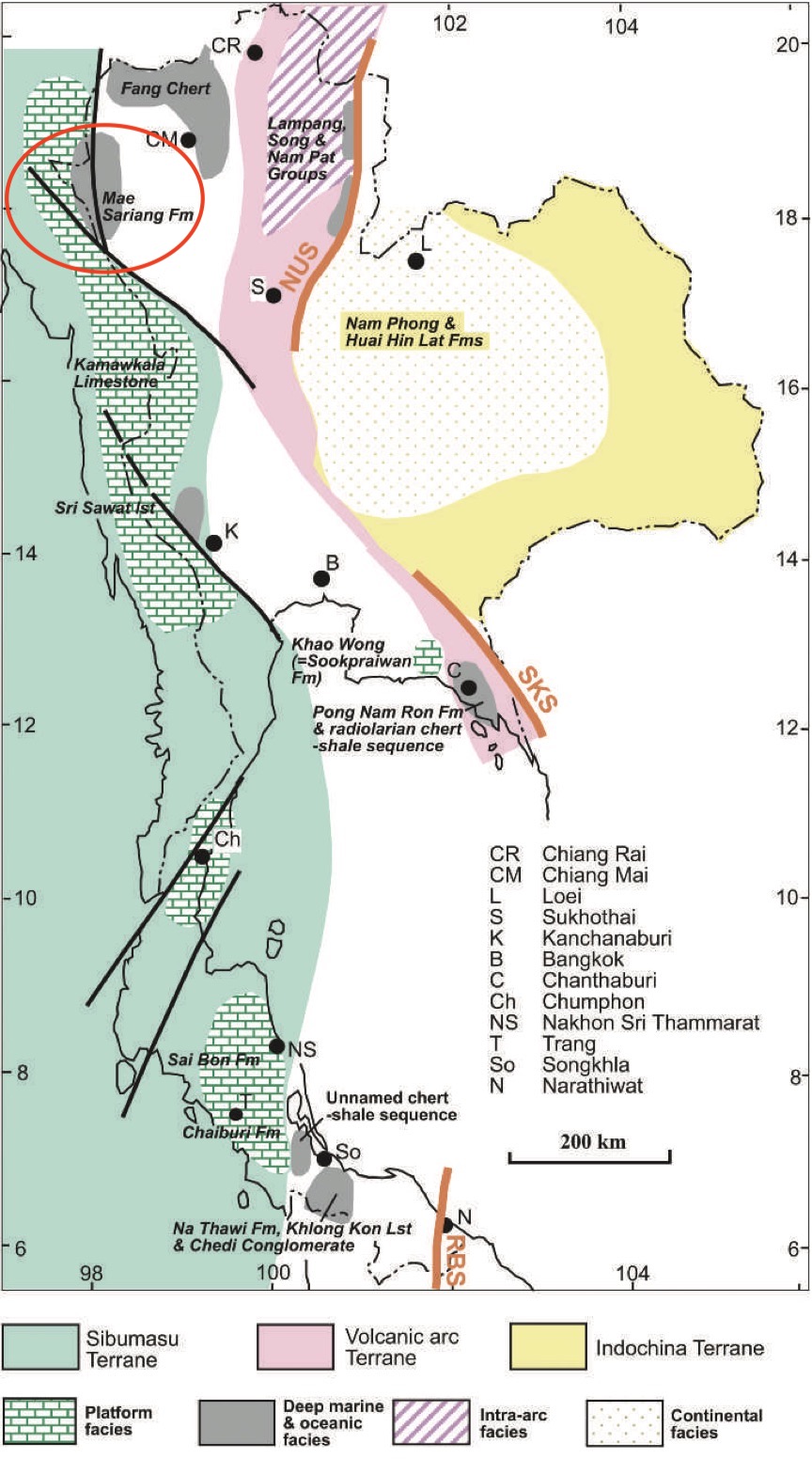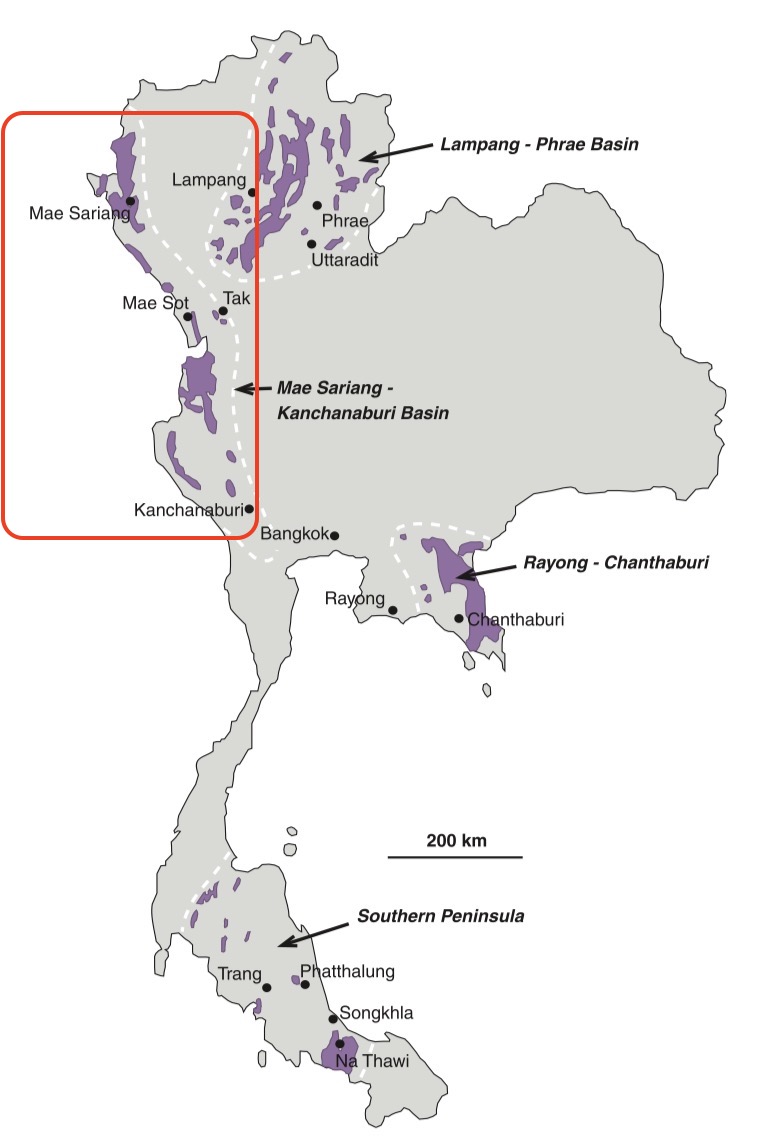Mae Sariang Fm
Type Locality and Naming
Synonym: หมวดหินแม่สะเรียง , Mae Sariang Gr
[Figure 1 : Generalized distribution of different Triassic sedimentary environments and some of the more important lithostratigraphic units, and their relations to the terranes. (The geology of Thailand, 2011) page 146]
Lithology and Thickness
Gray shale with chert and thin-bedded filament limestones; overlain by interbedded siltstone, and fine-grained sandstone; terminating in a conglomerate which contains pebbles of reworked radiolarite from which Carboniferous through mid-Triassic ages have been obtained. Thickness: 850 m
Relationships and Distribution
Lower contact
Not given. [Note: In the Mae Sot area, unnamed red-beds consist of unfossiliferous red to grey shale and sandstone about 270 m thick which disconformably overlie Permian mudstone, chert and limestone, and are overlain by gray shale and sandstone of late Ladinian to Carnian age. Therefore, regionally, the next older unit might be redbed facies (unnamed)?]
Upper contact
GeoJSON
Fossils
"Baum et al. (1970) reported finding Daonella cf. D. sumatrensis Volz, D. aff. D. lommeli (Wissmann) and Halobia styriaca Mojs in a sequence of shale, sandstone and conglomerate. This fauna corresponds with the Halobia styriaca zone of Carnian in the Lampang-Phrae Basin" [Sikhothai Tectonic Zone] ." (Chonglakmani, 2011).
Age
Depositional setting
Additional Information
Srinak and others (2007) subdivided their Mae Sariang Gr into 3 units, in ascending order: Kong Som, Pratru Muang, and Mae Laeb units.

